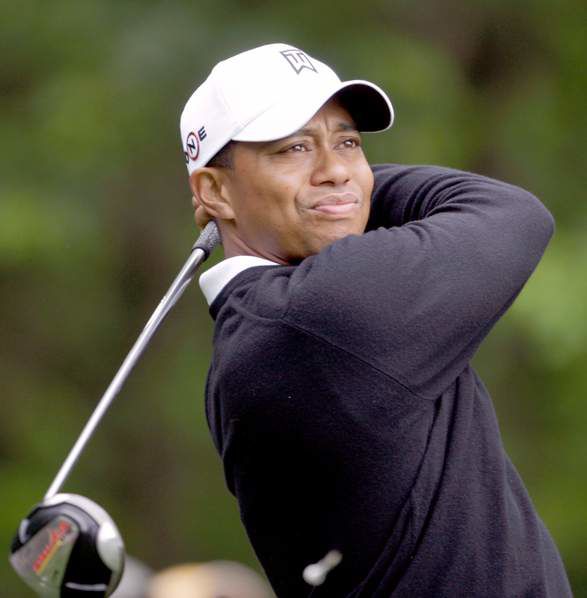Making the U.S. Open fun (but not easy)
Published 5:00 am Thursday, June 18, 2009

- Defending U.S. Open champion Tiger Woods will try to win his first major since defeatingRocco Mediate in an 18-hole playoff last year.
FARMINGDALE, N.Y. — Mike Davis glanced over his shoulder and frowned at blankets of black clouds hanging low in the northern sky, scudding with some pace toward Bethpage State Park and the saturated Black Course, where the U.S. Open will begin today.
As the man who has presided over the details of every change, great and small, to the tees, fairways, greens and rough at Bethpage Black in the years leading up to this week, Davis was approaching the starting line with every base covered. Except this one, which was uncoverable.
“More rain,” he said, a low growl of distant thunder punctuating the remark. “Just what we don’t need.”
Since the U.S. Open at Winged Foot in 2006, when Davis replaced the retired Tom Meeks as the U.S. Golf Association’s senior director of rules and competitions, not much rain has fallen on his parade.
As the man who took over for a predecessor who was often criticized by players for his course setups, the more approachable Davis instantly came across as someone open to golfers’ concerns.
His first act was to introduce graduated rough so players who barely missed the fairway could still display their skills instead of chopping out sideways. The reaction was instant. Suddenly the USGA was listening to suggestions from golfers and caddies? Players who had made questioning the parentage of rules officials an annual rite of the U.S. Open were suddenly talking about Davis as the sultan of setup. And they have continued to do so, through the 2007 Open at Oakmont Country Club and last year’s at Torrey Pines.
“The way they’ve done the rough since Winged Foot has been great, where it’s been a gradual progression of higher rough the farther off line you get,” Steve Stricker said earlier this month. “I think Mike wanted to restore some of that fairness to the game which we weren’t seeing at times in some other Opens.
“You know, I think it’s been, as far as major tournaments go, probably the fairest of them all lately.”
Andy North, winner of the U.S. Open in 1978 and 1985, agreed with Stricker.
“I think Mike has done a fantastic job, right from the start, when he introduced the graduated rough,” North said Monday. “I always thought it was ridiculous that you could miss the fairway by a couple of yards and be dead and miss it by 25 yards and have a shot.”
There are many pieces to the setup puzzle, something the final arbiter on the length of the rough, the speed of the greens, the width of the fairways and the positions of the holes knows well. The temptation that accompanies a decent lie in the rough may, on the whole, be hard to resist.
The idea of making birdie from the first cut of rough, or trying to drive a shortened par 4 to set up an eagle, are not easy to dismiss from a golfer’s thoughts.
“The idea is to give players more choices,” Davis said. “You’re kind of holding a carrot out there saying, ‘Hey, we’re going to give you this opportunity, but you have to really hit a good shot and if you don’t hit a good shot you will be worse off than if you had played it conservatively.’ I think that’s fun.”
Fun? Did he just use the word fun in reference to the U.S. Open?
Yes. Yes, he did. But do not get the wrong idea. He did not say easy. He did point out that tempting a player to play outside his comfort zone can result in harsh penalties, as when medium-hitting Jim Furyk twice tried to drive the green at driveable par-4s at Oakmont in ’07 and made two bogeys. He lost the Open by a stroke — for the second straight year.
“He could have hit 5-iron off each of those tees and had pitching wedge in,” Davis said. “And the worst he would have done is to win the U.S. Open by one, and he probably would have won it by two.”
That is the double-edged method to what Davis does. This week the 210-yard, par-3 eighth hole might play 50 yards shorter, with a front hole position that will bring the pond into play. Now that is fun.
“And it’s what keeps it interesting,” North said. “It’s not the exact same thing all the time. That’s what Mike has done so well with his setups.”
2009 U.S. Open at a glance
When: Thursday-Sunday.
Where: Bethpage State Park (Black Course), Farmingdale, N.Y.
Purse: $7,500,000
TV Today: • 7 a.m.-noon, ESPN.
• Noon-2 p.m., NBC.
• 2 p.m.-4 p.m., ESPN.






